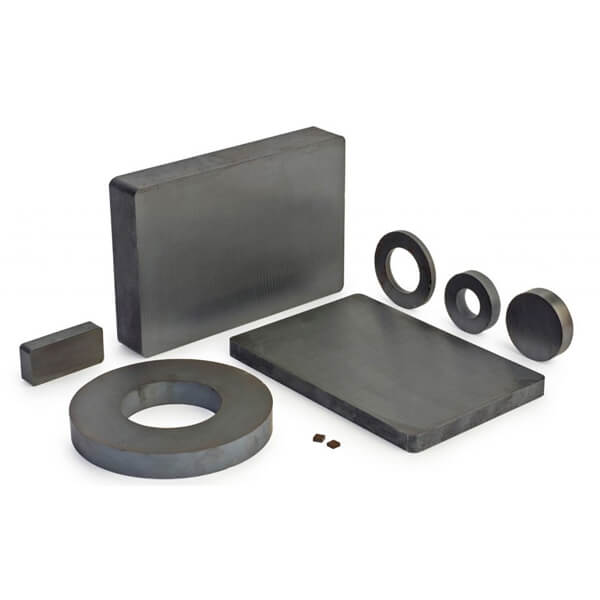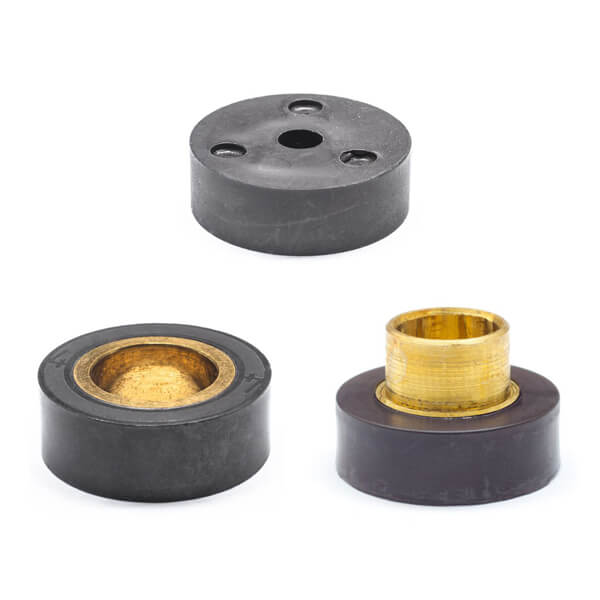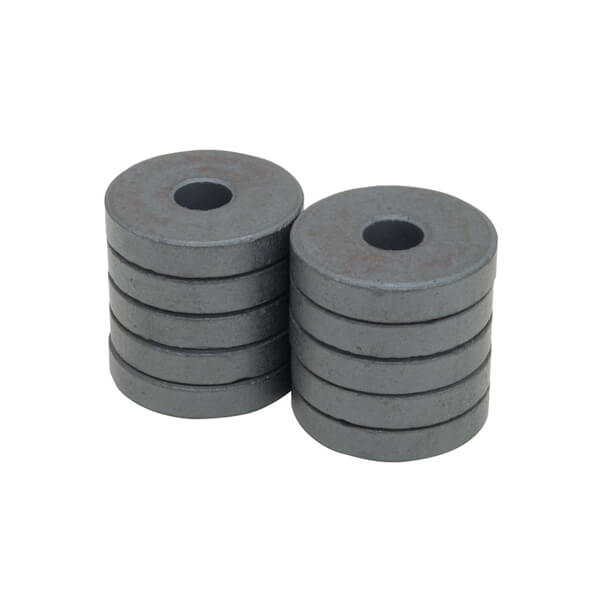Ferrite magnet, otherwise referred as ceramic magnet or hard ferrite, is developed by Japanese scholars Dr. Yogoro Kate and Dr. Takeshi Takei in 1930. As nonmetallic type of permanent magnetic material, ferrite magnet is utilizing iron oxide (Fe2O3), Barium Carbonate (BaCO3) or Strontium Carbonate (SrCO3) as raw material, therefore, ferrite magnets can be classified to Strontium ferrite magnets and Barium ferrite magnets according to the composition. Strontium ferrite magnets and Barium ferrite magnets are also known as anisotropic ferrite magnets and isotropic ferrite magnets, respectively. In addition to superior cost advantage and corrosion resistance, ferrite magnets are medium in magnetic properties and can be applied under relatively high temperature conditions.
Classifications of Ferrite Magnets
Ferrite magnets can be divided into sintered ferrite magnets and bonded ferrite magnets according to the manufacturing process. Sintered and bonded form has their distinctive magnetic performance and application scope.
Sintered Ferrite Magnets
Sintered ferrite magnets are widely served for the various walks of life in the past several decades and still possess very large market share of permanent magnets nowdays.
Bonded Ferrite Magnets
Bonded ferrite magnets can be further classified to injection ferrite magnets, extruded ferrite magnets, and calendered ferrite magnets base on the binder type and molding process. The latter two magnets are collectively known as the rubber magnet.
Shape Categories of Ferrite Magnet
Influencing Factors of Ferrite Magnet Price
The main raw material of ferrite magnet includes Strontium Carbonate and iron oxide. Ferrite magnet price will also fluctuate with the price change of these raw materials. Strontium Carbonate and the source of iron oxide are occupying 85% and 15% of the entire material cost, respectively. Therefore, it is self-evident that the price index of Strontium Carbonate has decisively impact on the ferrite magnet price. Ferrite magnet with different levels, formulas, and process technology has its unique demands on the raw material of iron oxide. For ferrite magnets, the source of iron oxide includes preprocessed iron scale and ferric oxide which prepared via Ruthner process. Iron scale is typically referring to the scaly oxide layers which peeled off from steel during its heating or rolling process. It is necessary to preprocess iron scale to ensure magnetic properties of ferrite magnet and that’s why routine iron scale’s price cannot be chosen as the price index. As a conventional inorganic compound, price index of ferric oxide is more convincing to downstream in comparison with preprocessed iron scale.







